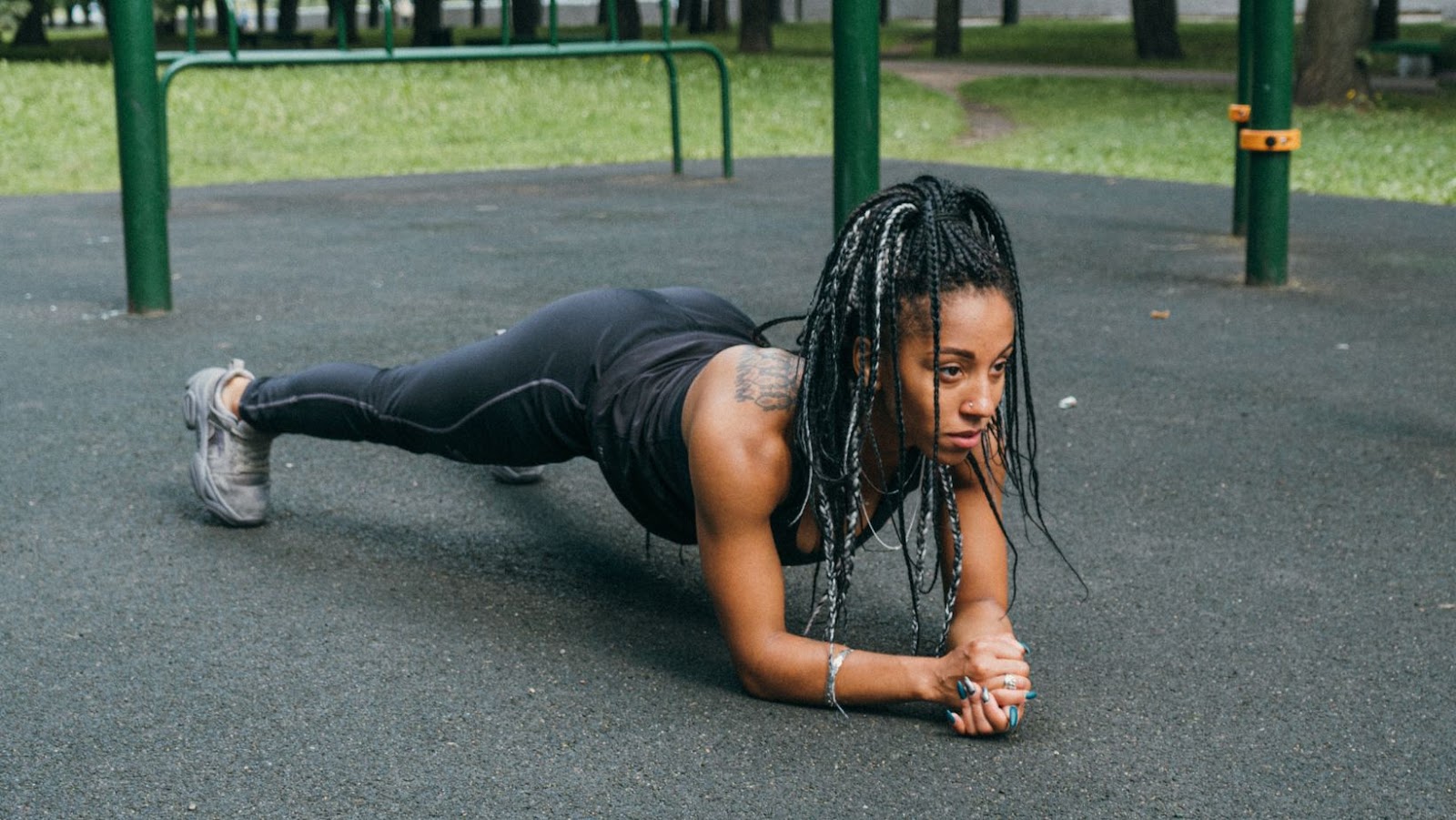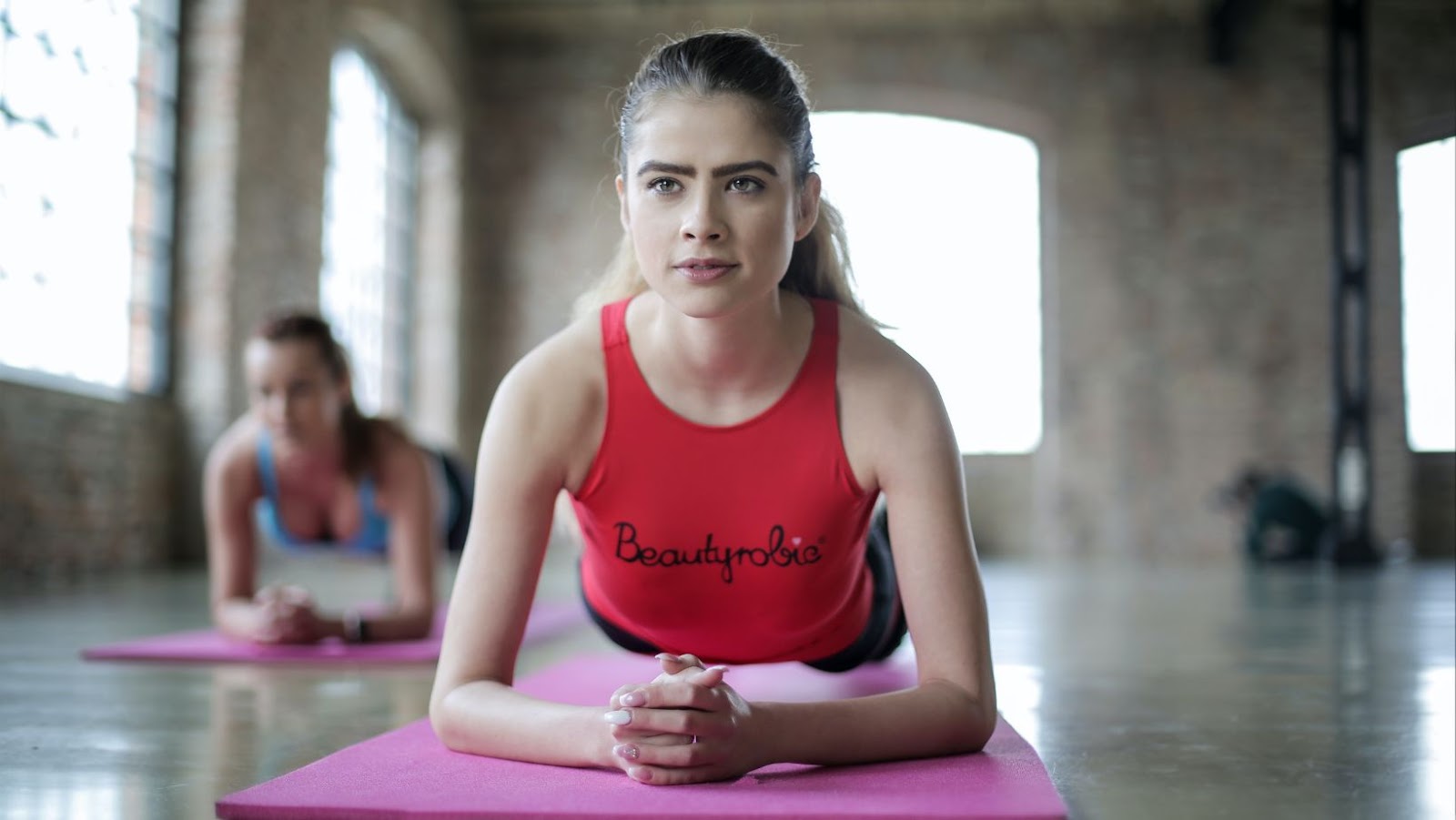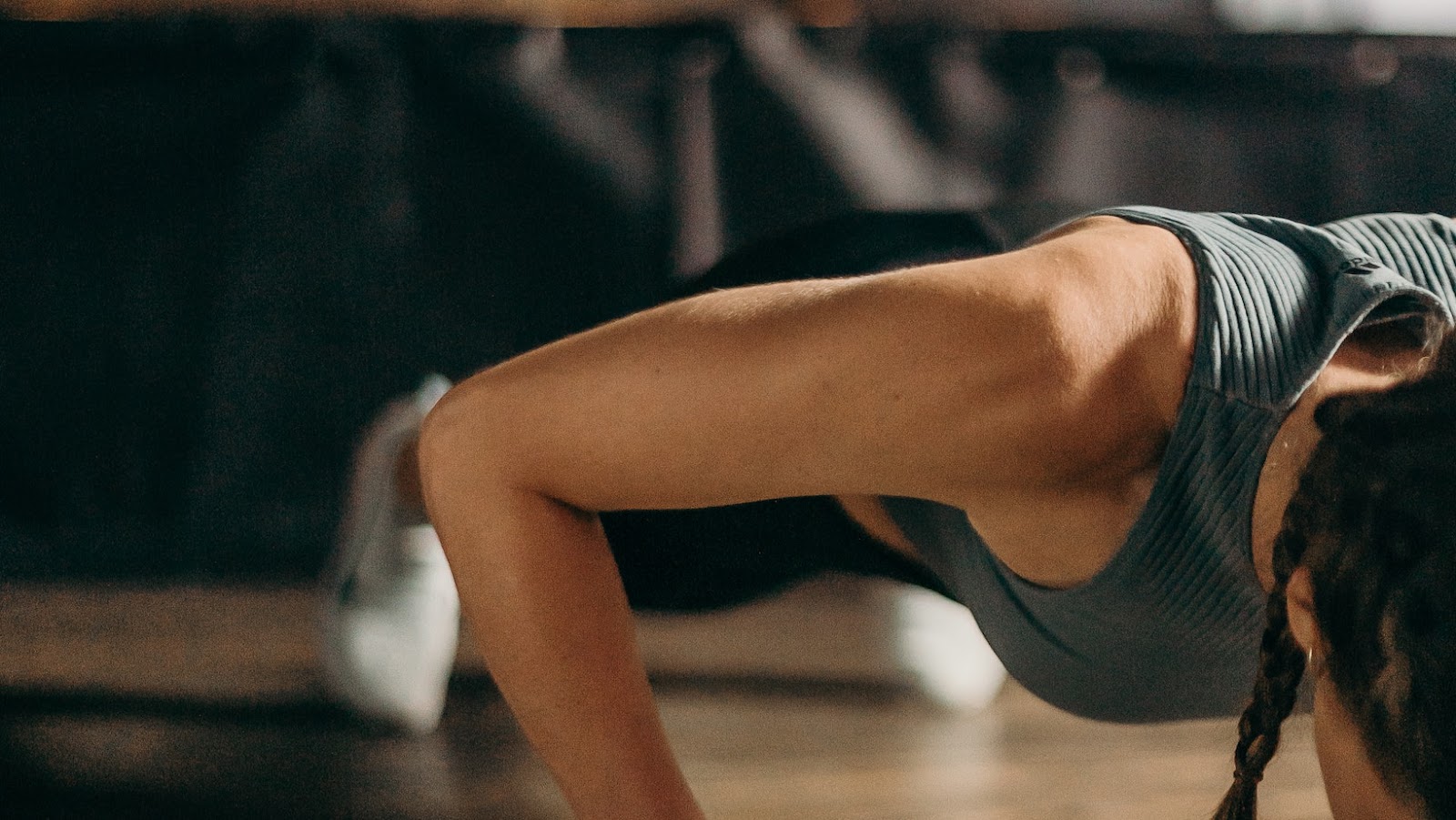Are you looking for the answer to what plank means? Plank is a great exercise for strengthening your core and improving your posture, but do you know how to do it correctly?
This article will provide you with all the information you need to know about plank and how to do it effectively. So if you’re ready, let’s get started!
What Does Plank Means
The plank is a simple yet highly effective bodyweight exercise that targets the core muscles, including the abs, back, and hips. The exercise is done by getting into a push-up position and holding the body straight as a plank, hence the name “plank.”
There are several variations of the plank exercise, each targeting different muscle groups and offering unique challenges. These include:
|
High plank |
Low plank |
Side plank |
Reverse plank |
Plank with knee taps |
The plank is an effective exercise for improving core strength, stability, and balance. It also engages other muscles in the body, including the shoulders, chest, and legs. The best part is that it requires no equipment and can be done anywhere.
Pro Tip: Make sure to engage your core muscles and keep your body straight and aligned during the plank exercise to maximize results.
Benefits of Doing Plank Exercises
Plank exercises are a popular and effective form of exercise that can benefit your body in numerous ways. But first, what does “plank” mean? A plank is a static exercise that involves holding your body in a straight line, supported only by your hands or forearms and toes.
Here are some benefits of doing plank exercises:
|
1. Builds core strength and stability. |
|
2. Improves posture and balance. |
|
3. Increases flexibility and range of motion. |
|
4. Reduces risk of injury by strengthening muscles. |
|
5. Enhances overall body coordination and athletic performance. |
Plank exercises can be modified to challenge any fitness level and can be done anywhere, making them a perfect addition to any workout routine. Pro tip: Start with short planks and gradually increase the length of time you can hold the position for maximum benefits.
Types of Plank Exercises
Plank exercises are a popular form of bodyweight training that works your core muscles, specifically your abs, back, and glutes. A plank is a simple yet challenging exercise that involves holding a static “plank” position for an extended period of time. The goal is to maintain proper form and engage your core muscles throughout the exercise.
There are several variations of the plank exercise that you can try to keep your workouts challenging and engaging. Some of the most popular types of plank exercises include the traditional plank, side plank, plank jacks, and plank with leg lifts. Each variation targets a slightly different area of your core muscles and can be tailored to your fitness level.
Adding different types of plank exercises to your workout routine can help you improve your strength, stability, and overall fitness level.
How to Perform Plank Exercises Properly
Before delving into the proper way of performing plank exercises, it is essential to know what ‘plank’ means. A plank exercise is a challenging isometric exercise that targets multiple muscle groups, including your core muscles, arms, shoulders, glutes, and back.

Here’s how to perform the plank exercise properly:
|
1. Begin in the push-up position, making sure your hands are positioned directly under your shoulders. |
|
2. Keep your body straight, with your toes tucked under and your core muscles engaged. |
|
3. Hold this position for as long as you can (starting from 20–30 seconds), making sure to breathe deeply throughout the exercise. |
|
4. Lower your body back down to the starting position. |
Repeat this exercise for two to three sets, gradually increasing your hold time with each round. Pro Tip: Plank exercises are an excellent way to improve your overall body’s strength and form. Ensure that your back remains straight and your core stays engaged throughout the workout for maximum effectiveness.
Common Mistakes to Avoid When Doing Plank Exercises
The plank exercise is a core-strengthening exercise that involves holding the body in a straight line from head to heels. Here are some common mistakes to avoid when performing plank exercises:
|
Incorrect form: |
Ensure that your elbows are directly beneath your shoulders and your head, neck, and spine are in alignment. |
|
Sinking hips: |
Avoid letting your hips drop or sag towards the ground, as this can cause strain on your lower back. |
|
Holding breath: |
Remember to breathe deeply and regularly while holding the plank position. |
|
Too much pressure on wrists: |
Place your forearms on the ground if you experience wrist pain or discomfort during plank exercises. |
|
Overarching back: |
Keep your back straight and don’t arch it excessively, as this can cause unnecessary pressure on your lower back. |
By avoiding these common mistakes, you’ll be able to get the most out of your plank exercises and strengthen your core safely and effectively.
Pro Tip: To add variation to your plank exercise, you can try lifting one arm or leg off the ground at a time or perform side plank exercises.
Tips for Doing Plank Exercises
The plank exercise is a fundamental bodyweight exercise that engages multiple muscle groups at once, including the core, shoulders, arms, and legs. The word “plank” refers to the position of the body during the exercise, which resembles a wooden plank.
|
Here are some tips to help you perform the plank exercise correctly: |
|
Start by placing your forearms (or hands if you prefer) on the ground, shoulder-width apart. |
|
Extend your legs behind you and rise up onto your toes, keeping your body in a straight line from head to heels. |
|
Keep your core engaged and your hips in line with your shoulders. |
|
Avoid sagging or arching your back, as this can lead to lower back pain. |
|
Breathe steadily throughout the exercise, and try to hold the plank for 30-60 seconds at a time. |
|
To make the exercise more challenging, you can lift one leg or arm off the ground, or try side planks. |
Plank Exercises for Beginners
Plank exercise is a form of bodyweight exercise that targets the core muscles and improves overall body strength. In a plank exercise, the body is held in a position similar to a push-up, with the forearms or hands on the ground, elbows tucked into the sides, and legs extended behind. The body should be in a straight line from the head to the heels, engaging the core muscles, glutes, and legs to maintain stability. Plank exercises can help improve posture, balance, and coordination, and are suitable for beginners looking to build strength without any equipment.
Here are some beginner-friendly plank exercises to try:
|
1. Elbow Plank |
2. High Plank |
3. Side Plank |
|
4. Knee Plank |
5. Plank Up-Downs |
6. Plank Hip Dips |
Remember to breathe deeply and engage your core muscles throughout each exercise to maximize the benefits.
How to Progress with Plank Exercises
Plank exercise, also known as a front hold or hover, is an abdominal exercise in which a person holds a push-up position for a specific period of time. The goal is to build endurance in the core muscles, specifically targeting the abs, back, and shoulders.

|
Tips to progress with plank exercises: |
|
1. Start with the basic plank, keeping your elbows under your shoulders and holding your body in a straight line for 30 seconds. |
|
2. Increase the duration gradually, aiming for 60-90 seconds per set. |
|
3. Once you can hold a basic plank for longer, try to add some variations, such as side planks, plank jacks, or single-arm planks. |
|
4. To increase the intensity, try doing plank exercises on an unstable surface, such as a yoga ball or a Bosu ball, or add weights to your plank workouts. |
Pro tip: Consistency and proper form are the keys to progress with plank exercises. Start slow, focus on your breathing, engage your core, and gradually increase the intensity of your workout.
